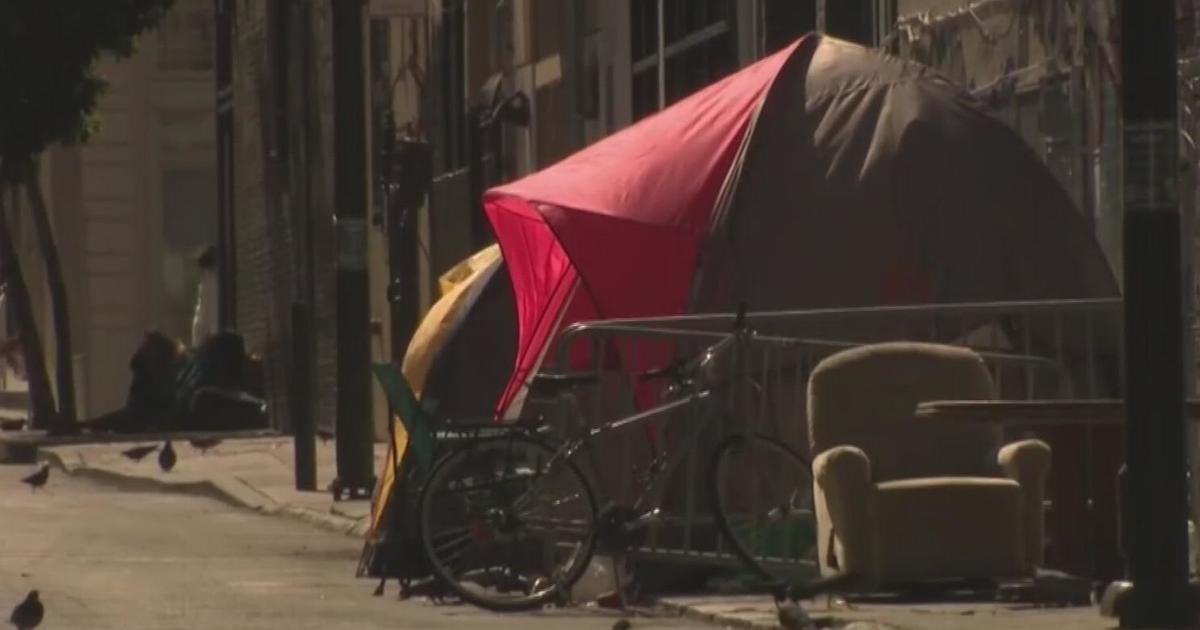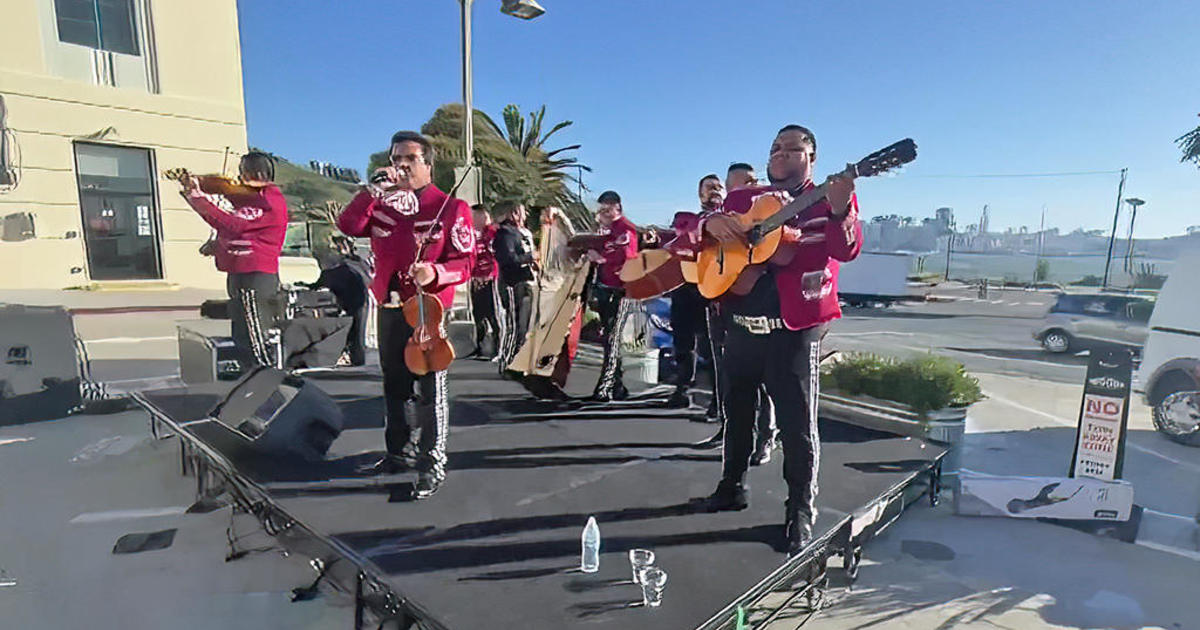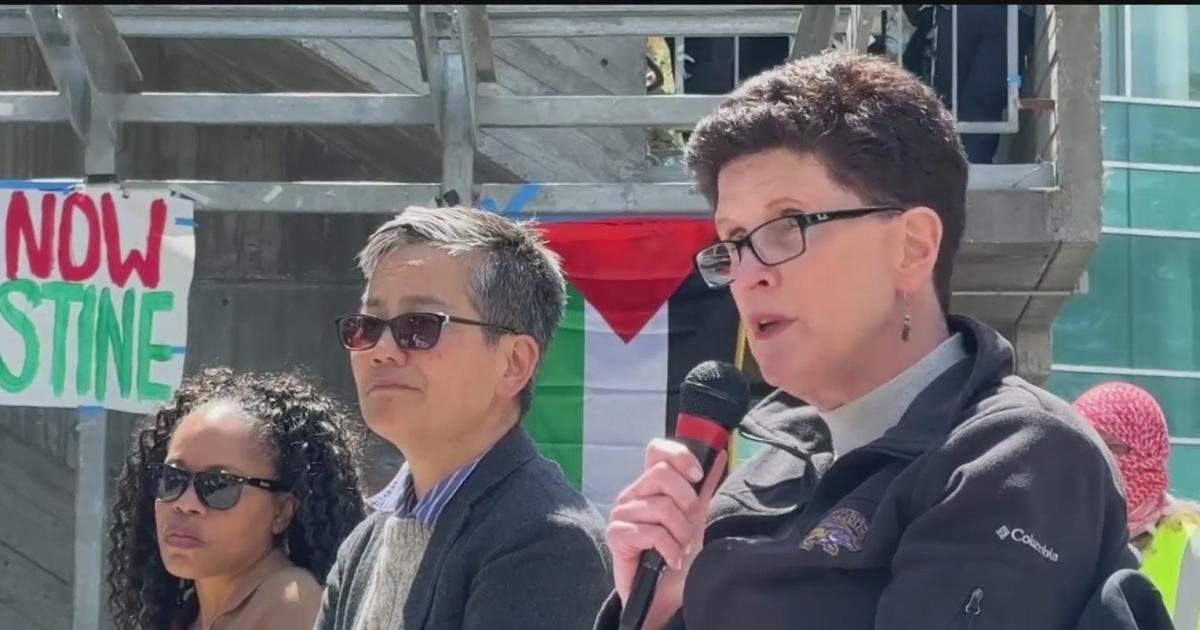Baby Diagnosed With Rare Blood Cancer Saved By Miracle Treatment
By Juliette Goodrich and Molly McCrea
SAN FRANCISCO (KPIX) -- On any given day in the United States, 42 families will hear these devastating words from a doctor: "Your child has cancer."
Lara Stuart and David Lodge from the East Bay heard these words not too long ago. Their firstborn son Quincy was only four months old.
"My reaction was please don't take my baby," recalled Lara.
"It was a big shock to say the least," recollected David.
The child was diagnosed with juvenile myelomonocytic leukemia or JMML for short. This type of blood cancer is rare and very aggressive. Quincy showed all the clinical signs, including a rash on his face, elevated white blood cell levels, and an enlarged liver and spleen. This type of cancer most commonly affects infants and toddlers.
"JMML is a notoriously difficult cancer to treat," said Quincy's physician Dr. Mignon Loh.
Dr. Loh is a pediatric hematologist and oncologist at UCSF Benioff Children's Hospital. Her specialty is childhood leukemia. The doctor remembered when she first saw her little patient.
"Quincy was a very sick young baby." said Dr. Loh.
The only hope for a cure is a stem cell transplant where intense chemotherapy is involved. They started the chemotherapy treatment, but his symptoms worsened.
"His stomach was large. It was like a football," noted his father.
"It was so enormous. He couldn't even eat," said Dr. Loh.
Physicians decided to remove his spleen. Then doctors had more bad news.
"We gave the chemotherapy and it didn't work." said Dr. Loh.
That meant no stem cell transplant. For Quincy, time was running out.
"We had exhausted all regular and conventional therapies," said Dr. Loh.
"He was dying, for all intents and purposes. It was scary," remembered his mother.
Doctors began to talk to the family about making Quincy comfortable.
But elsewhere at UCSF, a research scientist and his team were hard at work. They had seen Quincy's lab work.
"There were a few odd aspects of Quincy's presentation," noted Dr. Elliot Stieglitz.
Dr, Stieglitz explained how virtually all patients with JMML have a known genetic abnormality in their cancer cells. But Quincy's leukemia cells carried none of them.
"We could not find a mutation in his leukemia." said Dr. Stieglitz.
Dr. Stieglitz and his team took a deep dive into the baby's DNA. They used an advanced molecular test known as the UCSF 500 Gene Panel. The test sequences DNA from a patient's cancer cells and compares them to normal tissue.
"We read all the letters of the DNA in 500 genes that commonly cause cancer," said Dr. Stieglitz.
When the team got the results back, they were surprised.
"We all looked at each other and said, 'This really could be quite remarkable,'" recalled Dr. Stieglitz.
The scientists wanted to make sure what they saw with the UCSF 500 Gene Panel was accurate. At that point, they decided to run an even more sophisticated test that analyzes RNA, which offers a more sensitive measurement of gene expression and may identify even more clues.
The tests revealed something unusual in a four-month-old infant.
"To our surprise, we found that Quincy had a fusion between two different genes," said Dr. Stieglitz.
The mutation is known as a FLT3 fusion -- something that had never before been reported in a pediatric cancer case.
"These genes normally live on two separate chromosomes. But inside of Quincy's leukemia cells, these genes became fused together," explained Dr. Stieglitz.
This fusion was fueling Quincy's cancer.
The good news was that there is a treatment option for this particular fusion that involves FLT3: A targeted therapy called sorafenib.
The bad news was that the drug had never been used before on an infant.
"They asked us to trust them, and we did. It was a huge leap of faith," said Quincy's mom Lara.
Lara is a Registered Nurse at a different medical center in the Bay Area. She had a much deeper understanding of what was happening to her firstborn son.
According to doctors, Quincy's dad quickly learned everything he could on the disease and the issues involved. They agreed to give it a try.
The doctors made an educated guess at the dose that they were going to give Quincy. The adult pills were cut into a tiny pieces, which were then crushed and mixed into the food that Quincy would eat.
Then, by all accounts, a miracle unfolded.
"All of a sudden, Quincy's white blood cell counts started falling beautifully," explained Dr. Loh.
Quincy's cancer started to melt away. The leukemia cells became undetectable in his little body.
"It was a miracle. We were in shock," said Lara.
"You would never know that he had leukemia if you just met him," said David.
Quincy became healthy enough that he had a stem cell transplant. He just turned three and is in full remission from JMML.
The team's work is published in a prestigious medical journal known as Leukemia.
"This case really highlights the need to think outside the box," exclaimed Dr Stieglitz.
The bottom line? Identifying the genetic mutation in a challenging cancer without any other hope can unlock cures.
"We hit the geographical jackpot by having UCSF in our backyard," said Quincy's mom.
Related Links:
UCSF Benioff Childrens Hospital website
Juvenile myelomonocytic leukemia (JMML)



